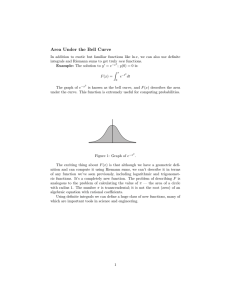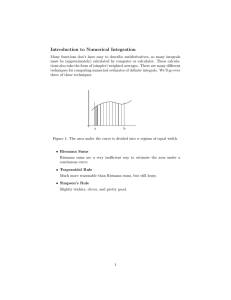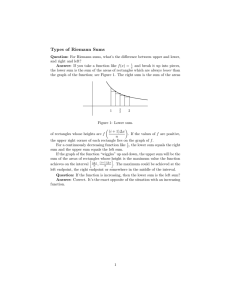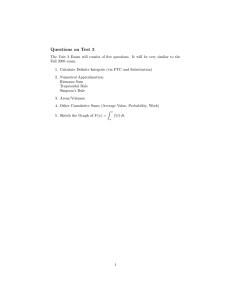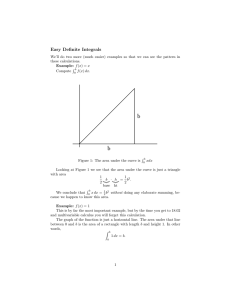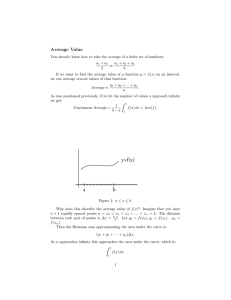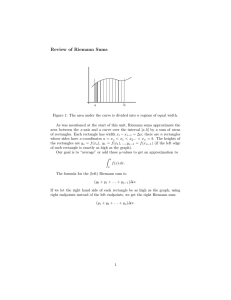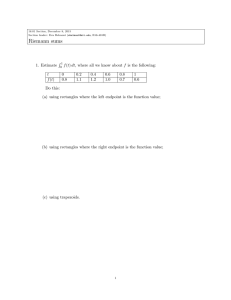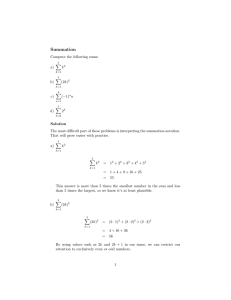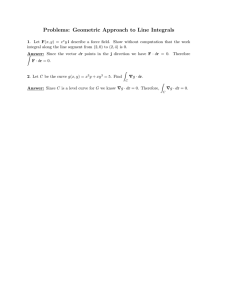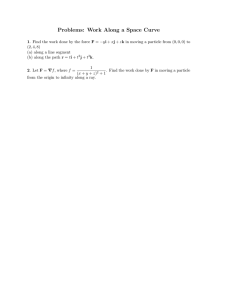Riemann Sums
advertisement
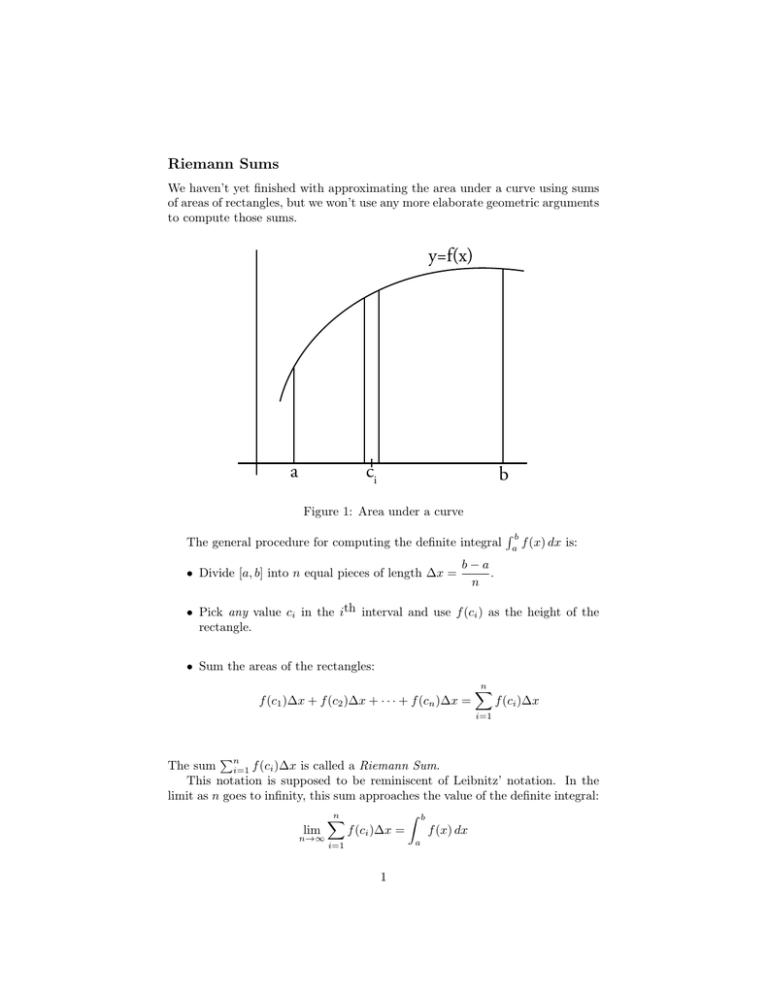
Riemann Sums We haven’t yet finished with approximating the area under a curve using sums of areas of rectangles, but we won’t use any more elaborate geometric arguments to compute those sums. y=f(x) a ci b Figure 1: Area under a curve The general procedure for computing the definite integral • Divide [a, b] into n equal pieces of length Δx = �b a f (x) dx is: b−a . n • Pick any value ci in the ith interval and use f (ci ) as the height of the rectangle. • Sum the areas of the rectangles: f (c1 )Δx + f (c2 )Δx + · · · + f (cn )Δx = n � f (ci )Δx i=1 �n The sum i=1 f (ci )Δx is called a Riemann Sum. This notation is supposed to be reminiscent of Leibnitz’ notation. In the limit as n goes to infinity, this sum approaches the value of the definite integral: � b n � lim f (ci )Δx = f (x) dx n→∞ a i=1 1 Which is the area under the curve y = f (x) above [a, b]. 2 MIT OpenCourseWare http://ocw.mit.edu 18.01SC Single Variable Calculus�� Fall 2010 �� For information about citing these materials or our Terms of Use, visit: http://ocw.mit.edu/terms.
